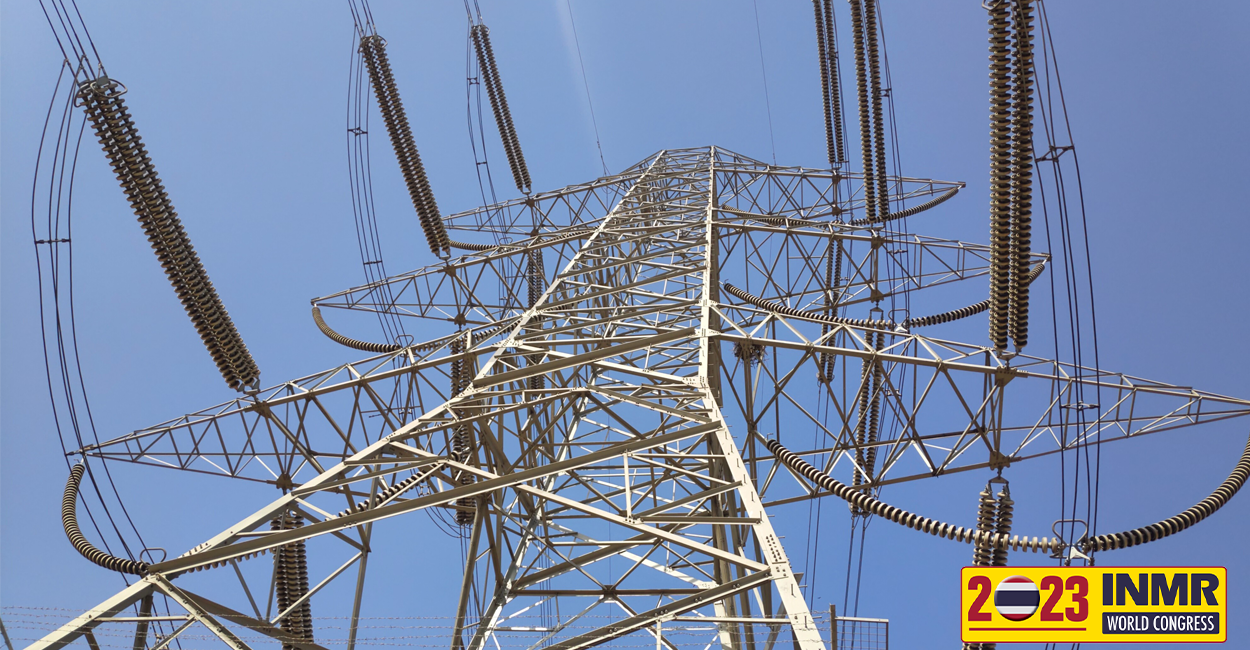During the last INMR conference, our scientific team presented three technical papers.

Standards: what now, what’ s next ?
Author: Jean Marie George – SEDIVER
Standards are in the background of any industry but often the dynamics of standardization are ignored by most users except those who are either directly involved in their design or those who need to use them directly such as engineers at the design stage or manufacturers of goods. As far as overhead line insulation is concerned, standards are perceived as “slow moving entities”, and this is perhaps a good thing given the nature of the utility world which is conservative and usually resistant to adopt new materials, new designs, new habits. Given the size and strategic importance of the assets at stake it can simply be called prudence.
In the world of overhead line insulators IEC is the dominant actor and numbers of national standardization committees adopt in one way or another the content of the work produced by IEC expert groups.
It appears that the global evolution of our climates wherever we are on the globe will quickly require another approach to make the grid more resilient and capable to cope with elevated temperatures or new stress conditions. New tests certainly need to be crafted and existing test procedures modified to adjust with the changes we see now more often every year…and perhaps it is urgent.
To read more, please download the pdf of the technical paper.
Pollution and insulators
Authors: Jean Marie George, Damien Lepley, Fabien Virlogeux – SEDIVER
Pollution of insulators is one of the most critical parameters in the continuity of operation of overhead lines in many countries either because of industrial, coastal or airborne dusty environments. While dielectric strength characteristics of insulator strings are vary basically defined by air gaps for lightning and switching, it is a much deeper technical question involving shape of insulators as well as material and surface properties when it comes to contamination.
This paper gives several directions, options and results helping line design engineers to cope with this question. Shape, HTM properties (hydrophobicity of the surface of the insulator) and other considerations are discussed including for HVDC applications based on latest test results and standard evolutions.
To read more, please download the pdf of the technical paper.
Coating…of course
Authors: Jean Marie George, Dr Sandrine Suc, Fabien Virlogeux – SEDIVER
The title of this paper can appear slightly provocative, but, it describes extremely well the current trend worldwide whenever high pollution conditions require special care in the definition of an insulator string and the relevant specific creepage distance.
While originally this technique was used by maintenance for mitigating problems encountered in service, the use of RTV coating on glass and porcelain discs has jumped to a point where it can no longer be considered as a marginal approach for solving a local problem but clearly part of the design of new transmission lines.
The major push came from the decision taken more than 20 years ago to establish a product which performances were established through an industrial process where the insulators were coated in a factory [1], in controlled conditions rather than in the field where the difficulty of outdoor conditions can compromise the long-term performance of the product.
To read more, please download the pdf of the technical paper.
通过本表格收集的信息由SEDIVER(简化的股份有限公司)处理,该公司在Nanterre 贸易和公司登记处注册,注册号542035761,总部位于7/9 allée de l 'Arche 92400 Courbevoie,目的是允许您下载我们的白皮书文件,并向您发送我们集团公司和产品的信息。这些处理活动的法律依据是我们需要知道谁访问和下载了我们的资源,以及给他们发送直接市场沟通的合法权益。
带有星号(*)的字段是必填信息。如您没有提供所需的信息,将无法下载白皮书文件。
在适用的当地法律允许的范围内,您有权访问、整改、消除和限制对您的个人数据的处理,也有权规定在您身故后的数据处理方案,您同时拥有您个人数据的数据可携权。您也有权利通过勾选本表格的专用框,并在任何时候通过点击我们所有市场传播中的取消订阅链接来拒绝接收市场传播。
如欲了解更多有关我们如何处理您的个人资料及如何行使您的权利,请参阅SEVES集团欧盟隐私政策及SEDIVER隐私政策。
如需更多信息,请咨询我们的隐私政策。
 简体中文
简体中文
